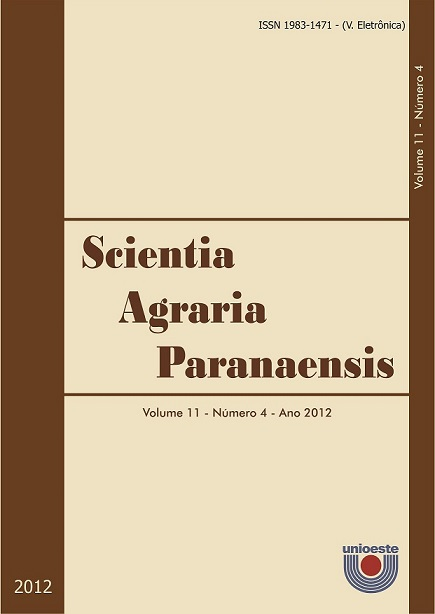Seeds conservation and cryoconservation of ‘japonês’ quince rootstock
DOI:
https://doi.org/10.18188/sap.v11i4.5132Keywords:
Chaenomeles sinensis, produção de mudas, germinação, estratificação.Abstract
A protocol of quince seedlings production was developed by grafted in the ‘Japonês’ rootstock in the winter (July). As the extraction of the seeds of the ‘Japonês’ is in May and it is demanded nine months to produce the rootstock, there is need to study techniques of seeds conservation to facilitate the seedlings production in the nursery. The present work has the objective to study the viability of the seeds conservation and cryoconservation of ‘Japonês’ quince rootstock. A part of the seeds was sowed immediately and the remaining had the humidity lowered for 14.14%. Part was stratification for 20 days in refrigerator in Petri plates, another part was stored by 3, 6, 9 or 12 months inside of plastic tubes, under 20, 5 ord -12 ºC and the remaining seeds were cryoconserved for 20 days. After the storage, all seeds were stratified, on sowed under Petri plates and placed in B.O.D. We evaluated the percentage of germination to the end of stratification and for more four evaluations spaced seven days. Concluded that it is possible to store the seeds of quince for up to 9 months under the temperature of 20 ºC or for long periods by cryoconservation.Downloads
Published
04-03-2013
How to Cite
CELANT, V. M.; PIO, R.; CHAGAS, E. A.; BARBOSA, W.; RAMPIM, L.; FIGUEIREDO, M. A. de; ASSIS, C. N. de; TIBERTI, A. S. Seeds conservation and cryoconservation of ‘japonês’ quince rootstock. Scientia Agraria Paranaensis, [S. l.], v. 11, n. 4, p. 61–65, 2013. DOI: 10.18188/sap.v11i4.5132. Disponível em: https://e-revista.unioeste.br/index.php/scientiaagraria/article/view/5132. Acesso em: 27 aug. 2025.
Issue
Section
Scientific Article
License
Aviso de Direito Autoral Creative Commons
Política para Periódicos de Acesso Livre
Autores que publicam nesta revista concordam com os seguintes termos:
1. Autores mantém os direitos autorais e concedem à revista o direito de primeira publicação, com o trabalho simultaneamente licenciado sob a Licença Creative Commons Attribution que permite o compartilhamento do trabalho com reconhecimento da autoria e publicação inicial nesta revista.2. Autores têm autorização para assumir contratos adicionais separadamente, para distribuição não-exclusiva da versão do trabalho publicada nesta revista (ex.: publicar em repositório institucional ou como capítulo de livro), com reconhecimento de autoria e publicação inicial nesta revista.
3. Autores têm permissão e são estimulados a publicar e distribuir seu trabalho online (ex.: em repositórios institucionais ou na sua página pessoal) a qualquer ponto antes ou durante o processo editorial, já que isso pode gerar alterações produtivas, bem como aumentar o impacto e a citação do trabalho publicado (Veja O Efeito do Acesso Livre).
Licença Creative Commons
Esta obra está licenciada com uma Licença Creative Commons Atribuição-NãoComercial-CompartilhaIgual 4.0 Internacional, o que permite compartilhar, copiar, distribuir, exibir, reproduzir, a totalidade ou partes desde que não tenha objetivo comercial e sejam citados os autores e a fonte.


